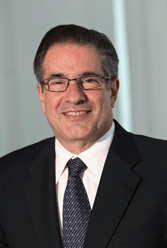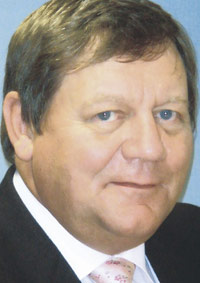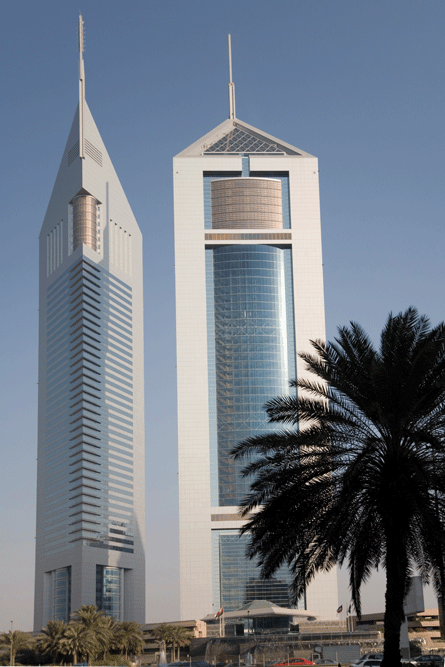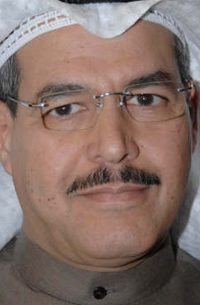High profile start-up DAE is one of four leasing firms in the Middle East with bold expansion plans. Is there room for so many new big players?
Dubai Aerospace Enterprise (DAE), which in November placed orders for an eyebrow-raising 200 aircraft, will soon become the Middle East's biggest leasing company and one of the world's largest. But although it has grabbed all the headlines recently it is not the only Middle Eastern leasing firm with big ambitions.
Kuwait's Aviation Lease and Finance Corporation plans to grow its fleet from 27 aircraft to at least 100 within the next five years. Abu Dhabi-based Oasis International Leasing, which currently has a portfolio of 26 aircraft, is also preparing for the biggest growth period in its history. Meanwhile, another Dubai-based start-up, Low-Cost Aircraft Leasing, seeks to quickly establish itself as a "niche" player with 35 to 50 aircraft. Several companies throughout the region, including Qatar Airways, are also eyeing a move into an increasingly crowded market.
 |
|---|
"There's certainly room for additional companies" Robert genise Chief executive, DAE Capital |
Established in 1992 by Kuwait Airways, ALAFCO is the Middle East's oldest leasing company and is currently the region's largest. Kuwait Finance House took over the firm in 2000 and it has since gradually expanded its portfolio from two to 27 aircraft. Publicly traded since 2006, ALAFCO is now ready for even more dramatic expansion and has a five-year goal of growing its fleet to 100 aircraft. It already has 66 aircraft on order and is looking to further add to its fleet through sale and leasebacks and other transactions. "We have very ambitious plans," says Alzabin. "100 won't be our ultimate end. We may go further."
Publicly-traded Oasis became the Middle East's second leasing company in 1997 but has never placed an aircraft order and has generally specialised in older aircraft models. However, senior marketing director Erik Dahmen says Oasis wants to reduce the age of its fleet and is now looking at orders as one of several expansion options. In December it signed a new $500 million facility with eight banks that will be used to finance expansion.
"We're looking at growing far faster than we previously have," Dahmen says. "But we won't buy market share as other people do. We won't buy simply for the sake of volume."
 If it does place an order Oasis will likely buy large regional jets because it is concerned there has been over-ordering in the narrowbody and widebody sectors, resulting in high prices and unusually early commitments. For example, DAE has committed to deliveries through 2018, ALAFCO 2017 and LCAL 2014. "We find it quite scary to order so far in advance. If you order way out there and pay a huge price for aircraft I do think that is a danger," Dahmen says. "It's a seller's market. There's a real danger of overpaying."
If it does place an order Oasis will likely buy large regional jets because it is concerned there has been over-ordering in the narrowbody and widebody sectors, resulting in high prices and unusually early commitments. For example, DAE has committed to deliveries through 2018, ALAFCO 2017 and LCAL 2014. "We find it quite scary to order so far in advance. If you order way out there and pay a huge price for aircraft I do think that is a danger," Dahmen says. "It's a seller's market. There's a real danger of overpaying."
DAE, ALAFCO and LCAL all insist they are comfortable with committing to aircraft several years in advance and have received good prices despite it being a seller's market. But LCAL chief executive Steve Clarke (right) acknowledges: "There has been a very substantial amount of over-ordering. How will Emirates ever use 50 A380s and Qatar 80 A350s? The mind boggles."
Clarke, however, is comfortable with LCAL's position because it has only acquired the Boeing 787 and is sitting on highly-coveted early delivery slots. LCAL has already placed eight of its 21 787s. "I would be surprised if all the aircraft are not placed by year-end," Clarke says. "We are getting four to five inquires a month from serious players."
DAE will need to place 10 times as many aircraft but Genise is not concerned about a potential downturn. He says five carriers have already contacted DAE to express interest in acquiring its aircraft even though first delivery is not until 2010. "I wouldn't be surprised if we place a few aircraft this year," Genise says. "There's no indication of the market softening. The market has been very solid."
Slowdown on the horizon?
Alzabin says ALAFCO has already placed 25 of the 66 aircraft it has ordered. "Now we see oil prices reaching $100 but don't see demand slowing down. It keeps going up."
He adds there may be "a little bit of a slowdown in 2008 caused by the credit slip in the United States" but expects the drop will not be as steep or as long-lasting as in previous cycles. This cycle, Alzabin argues, will be different because Asian and Middle Eastern markets are no longer so closely linked to US markets. "There's been a slowdown in the economy in the US but unlike in other years this hasn't caused a slowdown in other areas."

Clarke agrees: "I don't think the downturn will be worldwide. The industry has changed. Fifteen to 20 years ago it was more US and Europe centric."
 Alzabin (left) points out that even if there is a global downturn, demand for new fuel-efficient aircraft will remain high because carriers may accelerate fleet renewals. Clarke adds "green politics" will also have an impact because "there's a huge risk old generation aircraft will be taxed heavily".
Alzabin (left) points out that even if there is a global downturn, demand for new fuel-efficient aircraft will remain high because carriers may accelerate fleet renewals. Clarke adds "green politics" will also have an impact because "there's a huge risk old generation aircraft will be taxed heavily".
Genise adds: "My team has been through a lot of cycles. We know how to handle them. We are not concerned."
DAE, after trying unsuccessfully to enter the market by acquiring Singapore Aircraft Leasing Enterprise, hired Genise last April with a mandate to grow quickly by ordering aircraft. "Clearly our shareholders are not intimidated by scale," Genise says.
DAE is now focusing on adding aircraft prior to 2010, when the first of the 200 aircraft on order is delivered. It has already purchased 28 aircraft from Emirates and GECAS (18 of these were transferred to DAE's books in December but this was too late to be included in the survey) and Genise says DAE is now looking to acquire another 30 to 35 by the end of 2009. Based on these figures Genise anticipates DAE will have a portfolio valued at $5 billion by 2012 which will then grow by 35% per annum. "We will have a strong market in the Middle East, but we'll be a global company with a diversified portfolio."
LCAL already has a diversified portfolio and Clarke says the decision to set up in Dubai was made because "it has become the centre for aviation, it has a hub, it has infrastructure, it has a great climate, it has great golf courses and it has no personal income tax and low corporate tax".
ALAFCO and Oasis have more traditional Middle Eastern roots but are already diversified. Only five of ALAFCO's 27 aircraft are now placed with Middle Eastern carriers. While about half of Oasis' fleet is now Middle East-based it also had very few aircraft with local carriers until recently. "For a long time we did very little business in the Middle East although this was very important for our shareholders," Dahmen says. "It wasn't for a lack of trying but operating leasing wasn't so popular in the Middle East."
This has now changed and the rapid rise of the region's lessors will ensure there are plenty of opportunities for Middle Eastern carriers to finance their rapid expansion.
Source: Airline Business
















